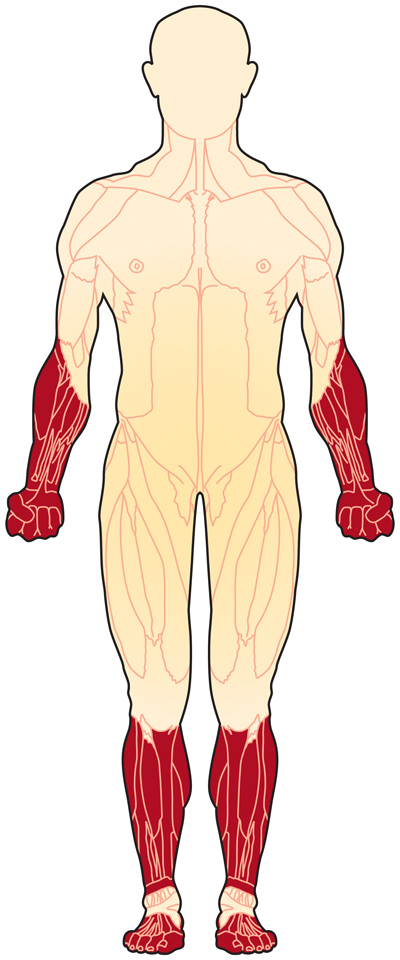Distal Myopathies
Distal Myopathies
 What is distal muscular dystrophy (DD)?
What is distal muscular dystrophy (DD)?
First described in 1902, DD is a class of muscular dystrophies that primarily affect distal muscles, which are those of the lower arms, hands, lower legs and feet. Muscular dystrophies in general are a group of genetic, degenerative diseases primarily affecting voluntary muscles.
Types of distal muscular dystrophy include: distal myopathy with vocal cord and pharyngeal weakness; Finnish (tibial) distal myopathy; Gowers-Laing distal myopathy; hereditary inclusion-body myositis type 1; Miyoshi distal myopathy; Nonaka distal myopathy; VCP Myopathy / IBMPFD; Welander’s distal myopathy; and ZASP-related myopathy.
What are the symptoms of DD?
Distal muscular dystrophy can lead to weakness and wasting of muscles of the hands, forearms and lower legs. For more, see Signs and Symptoms.
What causes DD?
DD is caused by a mutation in any of at least eight genes that affect proteins necessary to the function of muscles. It can be inherited in an autosomal dominant or recessive pattern. For more, see Causes/Inheritance.
What is the progression of DD?
DD begins in either childhood or adulthood, and is slowly progressive. It doesn't affect the intellect and is not considered life-threatening.
What is the status of research in DD?
Recent MDA-supported research in distal muscular dystrophy has concentrated on understanding how the gene defects that cause this diverse group of diseases affect the proteins made from these genes, and in turn how these protein abnormalities affect muscle tissue.

